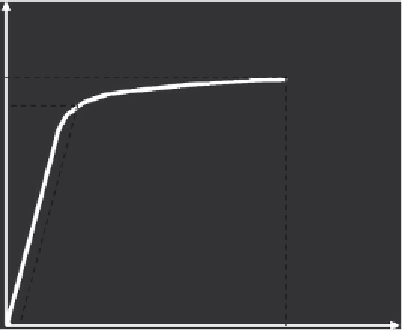Civil Engineering Reference
In-Depth Information
wires or strands for ordinary prestressing and low-relaxation tendons, respec-
tively, whereas Expression
(2.35)
applies to hot-rolled and processed bars:
0
:
75 1
m
Class1
D
s
pr
t
1000
ð
Þ
10
5
39
r
1000
e
6
:
7
m
s
pi
¼
5
:
ð
2
:
33
Þ
1000
0
:
75 1
m
Class2
D
s
pr
t
ð
Þ
10
5
66
r
1000
e
9
:
1
m
s
pi
¼
0
:
ð
2
:
34
Þ
0
:
75 1
m
Class3
D
s
pr
t
1000
ð
Þ
98
r
1000
e
8
m
10
5
s
pi
¼
1
:
ð
2
:
35
Þ
where
D
s
pr
is the absolute value of the relaxation losses of the prestress,
s
pi
;
for posttensioning,
s
pi
is the absolute value of the initial prestress
s
pi
¼s
pm0
and, for pretensioning, is the maximum tensile stress applied to the tendon
minus the immediate losses occurred during the stressing process;
t
is the
time after tensioning (in hours);
m¼s
pi
/
f
pk
where
f
pk
is the characteristic
value of the tensile strength of the prestressing steel; and
r
1000
is the value
of relaxation loss (in %), at 1000 h after tensioning and at a mean temperature
of 20
C. The long-term (final) values of the relaxation losses may be esti-
mated for a time
t
equal to 500,000 h (i.e., around 57 years).
The 0.1% proof stress (
f
p0.lk
) and the specified value of the tensile strength
(
f
pk
) are defined as the characteristic value of the 0.1% proof load and the
characteristic maximum load in axial tension, respectively, divided by the
nominal cross-sectional area as shown in
Figure 2.12
.
According to EC2,
s
f
pk
f
p0.1k
e
e
uk




Search WWH ::

Custom Search